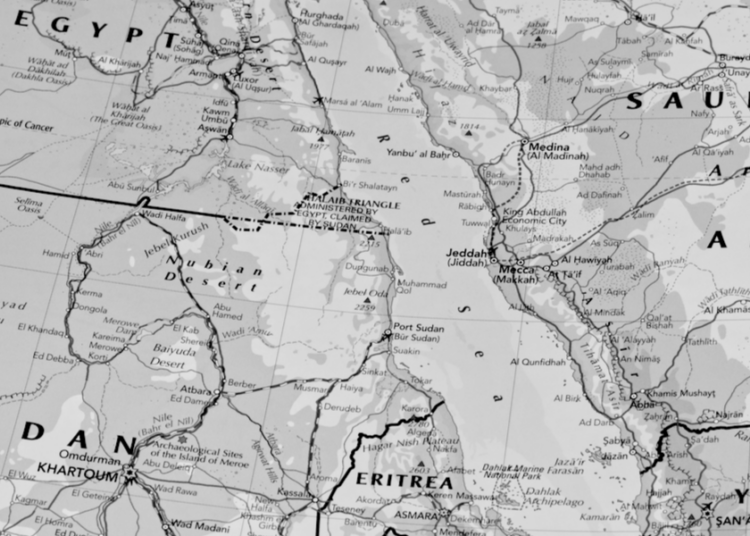LAST week, while our only two aircraft carriers were moored in Portsmouth, the RAF sent four aging Typhoons via Cyprus to bomb Houthis in the hope of giving HMS Diamond a break from shooting down Iranian-made drones. They attacked in conjunction with the US Navy and, while they probably gave the Houthis a bit of a headache, they inadvertently revealed the appalling state of the armed forces.
The Red Sea is a vital shipping lane with some 10 to 15 per cent of world trade passing through it. The west has long had forces in the area and the nearby Persian Gulf to ensure freedom of the seas and the ready availability of hydrocarbons. Every once in a while those who hate the west, or Israel, or both, seek to interdict such trade. The producer states do it via OPEC and pricing, Iran with missiles and guns. Iran in the Houthis now has a proxy that can threaten a wider range of goods – most oil tankers don’t fit into the Suez Canal. Most liquid natural gas carriers and container ships do. The UK has had ships stationed in and about the area throughout my lifetime.
The Red Sea threat is such that Maersk, Hapag Lloyd and now Qatar Energy are routing vessels via Cape Good Hope. That adds about nine days to the journey time and thus costs will rise as more vessels are at sea for longer. According to Reuters traffic through the canal is down 30 per cent.
That’s why some 20 countries have joined the United States in Operation Prosperity Guardian. The name says it all really; even the EU is muttering about sending support despite having no military organisation. Of course the UK could opt out, but we need the LNG for energy security and we have to justify our seat on the security council. Fortunately for the UK we have just the sort of ship needed and it happens to be there. Diamond is a Type 45 anti-air destroyer capable of shooting down all the missiles in the Houthi arsenal.
Those missiles range from indigenously produced Samad drones (also being used by Russia in Ukraine) through to Chinese copies of the Exocet (the missile that sank HMS Sheffield in the Falklands war) to simple ballistic missiles. At around 8,500 tons HMS Diamond and similar warships are much smaller than the 160,000 ships which transit the Suez Canal, and might well survive a hit – unless they are an LNG carrier. https://en.wikipedia.org/wiki/LNG_carrier Diamond and the other warships also protect against Houthi gunboats as they have anti-ship weaponry too. If they withdrew the Houthis would have free range.
The problem however is the logistics and expense of shooting $1.5million Sea Viper missiles at $20,000 drones. The availability of these missiles is constrained – Diamond carries 48. Some time soon they’ll need replenishment. Thus it becomes sensible to destroy the launchers, hence the air strikes.
The US can recruit sailors, and thus used its carrier in the Indian Ocean. The RAF sent four of its older Typhoons from (or via) Cyprus. They had to rely heavily on the US for airborne early warning and control (AWACS) because the RAF got rid of its AWACS in 2021 and the replacement hasn’t turned up yet. £20billion or so of combat aircraft are pretty much useless for anything more than airshows unless we are working in a coalition with someone who does have AWACS. Add that to the £10billion of uncrewed carriers and it’s hard not to conclude that the MoD is in disarray.
For once this is not a money problem – since 2019 the defence budget has increased 20 per cent in real terms, thanks largely to the previous Defence Secretary Ben Wallace. Unfortunately, as Grant Shapps is finding, spending may have gone up but capability has diminished. We’re throwing good money after bad.
The Navy can’t crew its warships, or even find a retired admiral. The Army has the same number of soldiers as the Cold War British Army of the Rhine yet delivers just 20 per cent of the combat power. As I’ve said, the RAF has no AWACS and even the Red Arrows struggle to field sufficient aircraft to put on a show.
Worse, recruitment has collapsed and indiscipline is rife. Even the famed SAS have problems with some of their number moving into the drugs trade. All this is a sign of failed leadership.
How to fix it? Good question. Firstly all parties need to accept that there is a problem and that it is their fault because it happened on their watch. Then we must find the people to fix it, which is unlikely to include many in the upper echelons of the Armed Forces. Who is going to drive reform through?
Can it be done? The British Armed Forces are not yet in the desperate state that the Americans were after Vietnam. They recovered from a drug-ridden laughing stock to a formidable fighting machine in a little over a decade. But the challenge to rearm physically and morally is still formidable.

